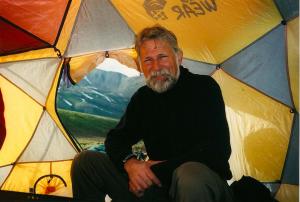Jim was a specialist in high precision U-Pb dating of zircon and made several key discoveries that significantly advanced U-Pb geochronology. Jim did his PhD at UCSB working with Cliff Hopson and George Tilton, one of the founders of U-Pb dating. He then went on to complete a post-doc at the Carnegie Institution of Washington before returning to UCSB. Throughout his career, Jim was frequently ahead of his time in developing new techniques and understanding the complexities of the U-Pb system. As a post-doc at CIW, he developed the first two-bottle still for producing cleaner acids, which decreased Pb blanks by over an order of magnitude, a key development for reducing sample size and increasing the precision and accuracy of dating. His still design was adopted by labs around the world and used for decades. He also made key theoretical contributions recognizing the potential impact of disequilibrium in the U decay chain to U-Pb dates, outlining the implications of uncertainties in the U decay constants in dating, and pushing for robust error propagation. Each of these topics have become increasingly important as U-Pb dating has become more precise (as a result of Jim and others' constant improvements). Perhaps Jim's biggest contribution was his development of the chemical abrasion method. A constant concern in U-Pb dating is that loss of Pb can lead to erroneous dates. Jim spent years developing the chemical abrasion method, which uses a combination of annealing of zircon, followed by one or more leach steps to preferentially dissolve damaged zircon prior to final analysis, minimizing the impact of Pb-loss. The chemical abrasion has been adopted by high precision labs around the world and significantly improved the precision and accuracy of dating, providing new insight into the timing and rates of a wide range of geological processes. His method is now the “gold standard” for U-Pb dating and his seminal 2005 paper on the technique has been cited over 1300 times.
Beyond his contributions to U-Pb dating, Jim also did extensive work on Cordilleran geology, ophiolites, and many other topics. He served as Chair of our department twice, first in the 1990s and then in the 2000s. He was also an engaging teacher, often adding interesting asides and stories to his lectures; his skill was recognized by the Muckers teaching award.
As a colleague, Jim was humble, kind, generous, and supportive, and he cared about the well-being of everyone around him. He will be very missed by those that knew him.
-by Matt Rioux, a member of the Earth Science faculty

